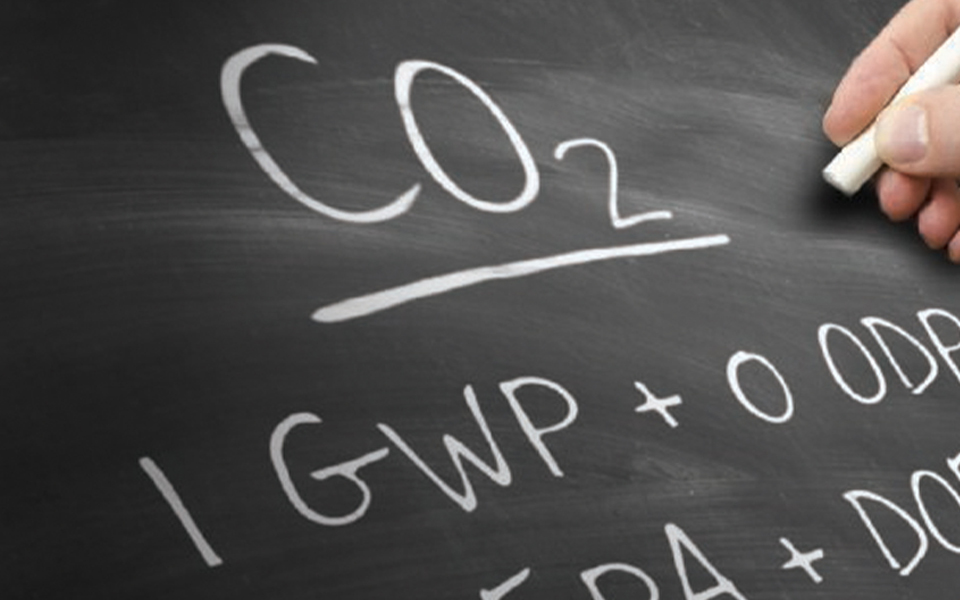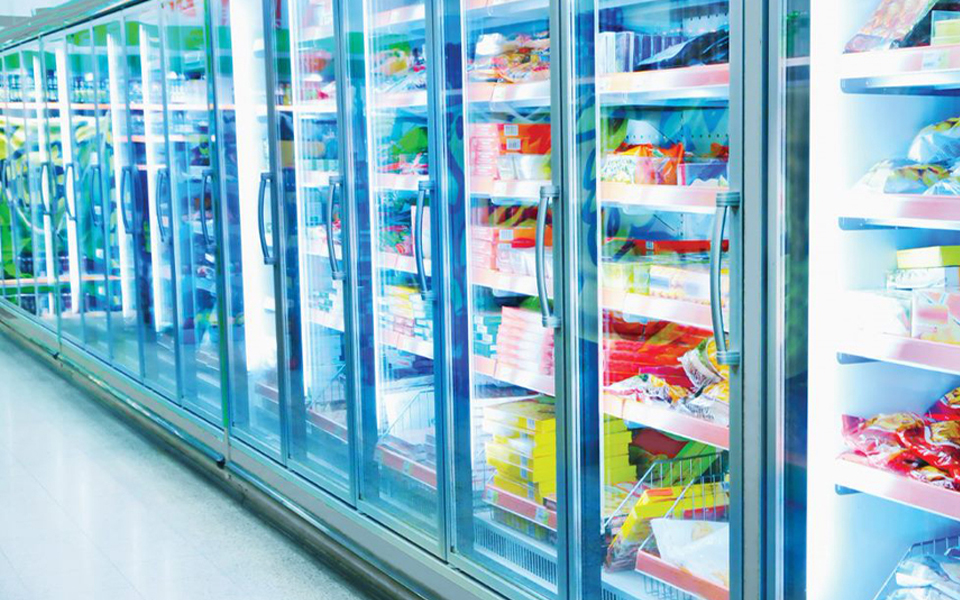CO₂ as a refrigerant – introduction to retail cascade systems

In post 11 of our CO2 as a Refrigerant blog series, I provide an introduction to CO2 cascade systems used in commercial refrigeration systems.
A CO2 cascade system is comprised of two distinct stages and systems:
- A low stage provides the cooling using R-744, always operating in subcritical mode of operation.
- A high stage absorbs heat from the condensing R-744 at the cascade heat exchanger, leveraging a lower-global warming potential (GWP) A1 or A2L refrigerant in a more traditional system architecture.

A CO2 cascade system offers an alternate architecture for retailers who want to deploy a low-GWP option but may not want to deal with the complexities of CO2 supercritical operation. In a CO2 cascade system, the high, medium-temperature (MT) and low-temperature (LT) stages are completely independent of each other, except for a heat exchanger that connects them.
Typically, the high stage of a supermarket system would use a lower-GWP, medium-pressure HFC refrigerant such as R-513A which referred to as a “hybrid” system. In the future, this may also include lower-flammability A2L alternatives. Not only does the high stage serve the MT loads, but it is also used to condense the CO2 in the low stage. In the low stage, CO2 is generally discharged into a plate heat exchanger acting as a condenser; R-744 is condensed and then recirculated for LT loads. The simple high-stage architecture typically employs a close-coupled system controlled by the pressure in the low-stage receiver.
R-744 is a very effective refrigerant for LT loads; and with a GWP of 1, it contributes to a cascade architecture that could meet many retailers’ sustainability objectives. Within the cascade heat exchanger, the evaporating high-stage refrigerant absorbs heat rejected by the condensing R-744. The condensing temperature is always maintained below the critical point.
In the final post of this CO2 as a Refrigerant blog series, I’ll explore the advantages and disadvantages of the systems examined thus far and review system selection best practices.

CO2 as a Refrigerant — Criteria for Choosing Refrigerants
by Andre Patenaude | Efficiency & Refrigerant Regulations, Refrigerants
This is post two of CO2 as a Refrigerant, a blog series covering the fundamental considerations...

CO2 as a Refrigerant – Properties of R-744
by Andre Patenaude | Efficiency, Efficiency & Refrigerant Regulations, Refrigerants
This is post three of CO2 as a Refrigerant, a blog series covering the fundamental considerations...

CO2 as a Refrigerant – Comparison of R-744 with Other Refrigerants
by Andre Patenaude | Efficiency, Efficiency & Refrigerant Regulations, Refrigerants
In post six of our CO2 as a Refrigerant blog series, I will compare CO2 to traditional and...
The post CO2 as a Refrigerant – Introduction to Retail Cascade Systems appeared first on Copeland E360 Blog.